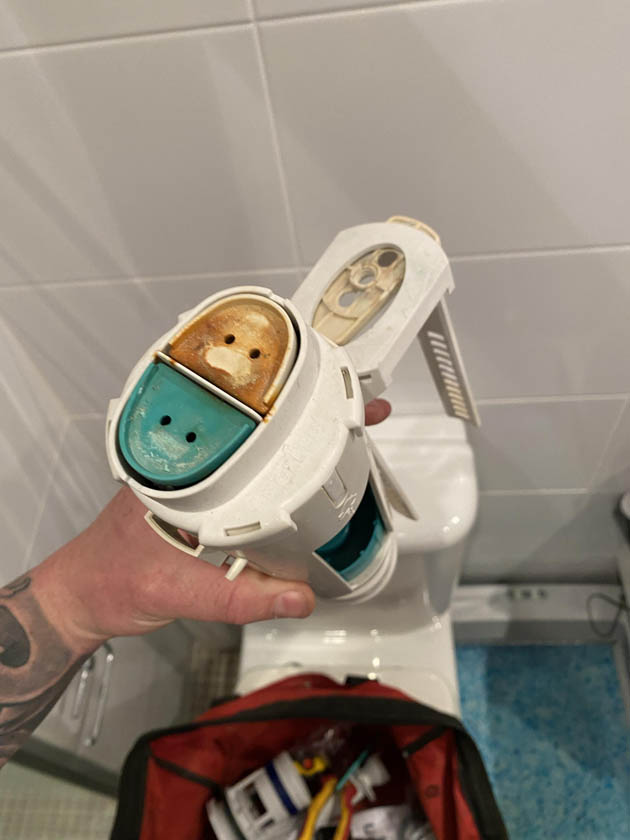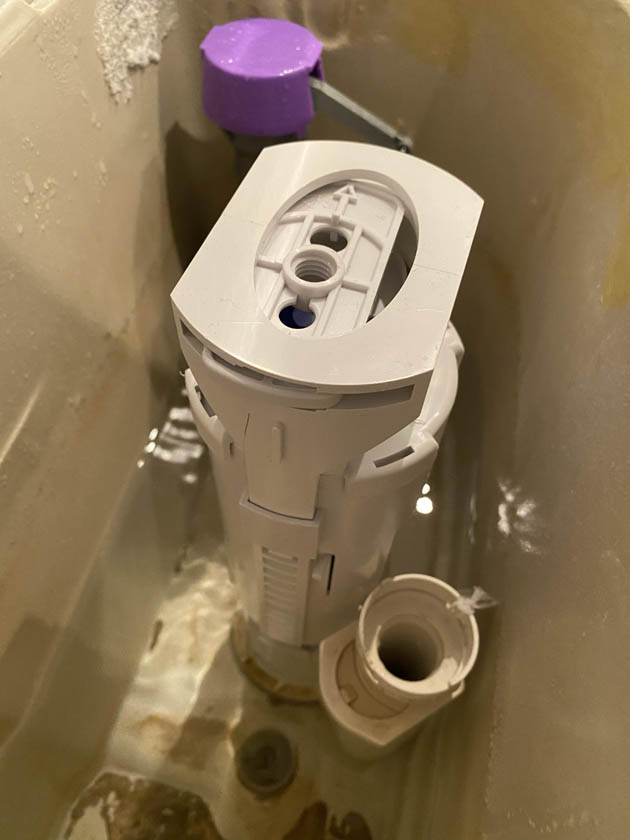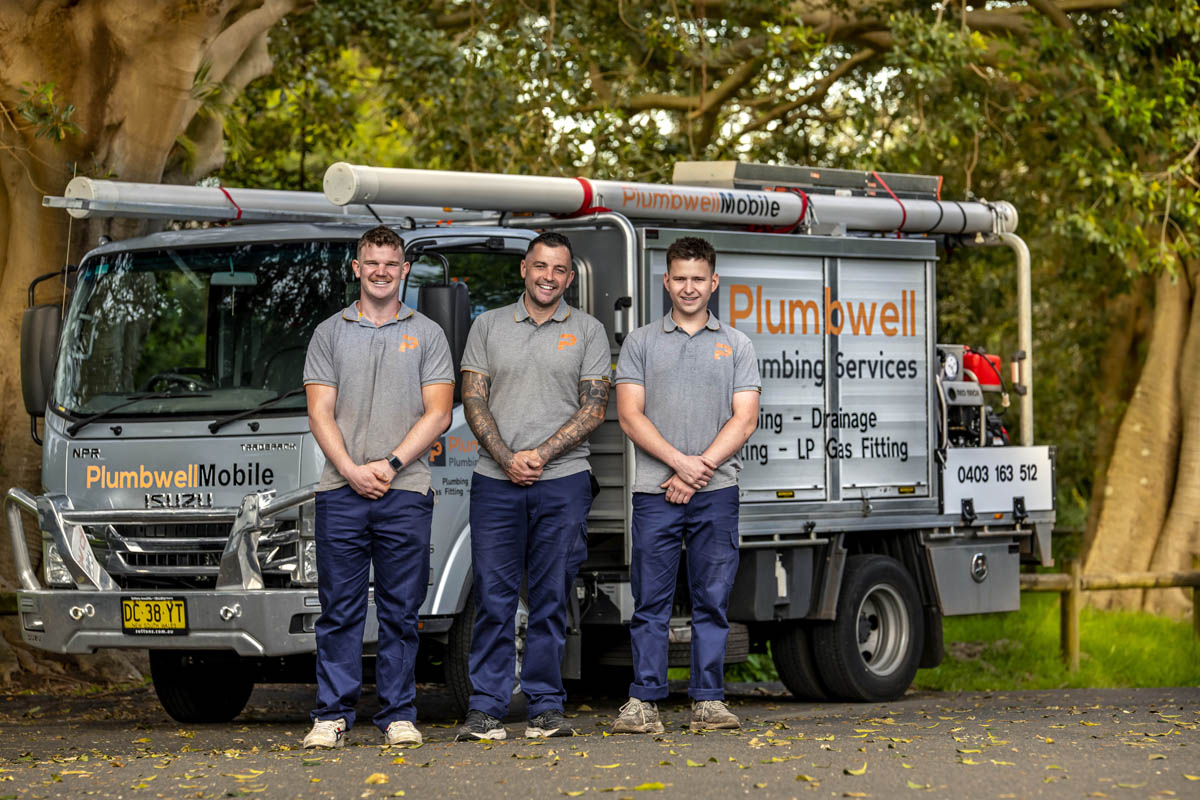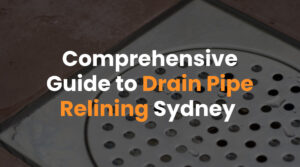A constantly running toilet is not only a nuisance but can also lead to a significant increase in your water bill. In Australia, where water conservation is essential, addressing a running toilet quickly is crucial to prevent wasted water and comply with local regulations. This guide by Plumbwell Plumbing Services provides step-by-step instructions on diagnosing and fixing the common problem of a running toilet, ensuring your toilet stops running and functions efficiently.
Common Causes of a Running Toilet
A running toilet can be due to several issues within the toilet tank, leading to continuous water flow into the toilet bowl. Understanding these causes is the first step towards a solution:
-
- Faulty Fill Valve: A fill valve that doesn’t shut off the water supply properly can cause water to continue running. Over time, wear or damage to the valve can prevent it from closing, allowing water to flow constantly.
-
- Worn Out Toilet Flapper: The flapper creates a seal at the bottom of the tank; a worn or improperly seated flapper can let water leak into the bowl, causing the toilet to keep running.
-
- Improper Water Level: If the water level in the tank is set too high, water may flow over the top of the overflow tube, leading to a running toilet. Adjusting the float can correct the water level.
-
- Malfunctioning Flush Valve Assembly: Damage to the flush valve assembly can allow water to escape into the bowl, even when you haven’t flushed the toilet.
-
- Leaking Toilet Seal: A compromised seal between the toilet tank and bowl can cause water to leak, contributing to the running water issue.
Tools and Materials You’ll Need to Fix a Toilet That Keeps Running
To effectively address a running toilet, having the right tools and replacement parts on hand is essential. Here’s what you’ll typically need:
-
- Adjustable Wrench: For loosening and tightening nuts and bolts attached to the toilet parts.
-
- Replacement Flapper: A new toilet flapper to replace the old, worn-out one, ensuring a proper seal at the bottom of the tank.
-
- Fill Valve Kit: In case the existing fill valve is faulty, a new fill valve kit specific to your type of toilet tank will be required.
-
- Float Ball or Cup: Depending on your toilet’s design, you might need a new float ball or cup to correctly adjust the water level in the tank.
-
- Sponge and Bucket: To soak up and remove any remaining water in the toilet tank during repairs.
-
- Teflon Tape: Useful for sealing threaded connections and preventing leaks at the water supply line.
-
- Flathead and Phillips Screwdriver: For adjusting or replacing parts inside the toilet tank.
Step-by-Step Guide to Diagnosing the Issue

When faced with a toilet that won’t stop running, diagnosing the root cause is essential for an effective repair. This guide will walk you through identifying why your toilet keeps running, allowing for targeted solutions that conserve water and reduce your bills.
-
- Inspect the Flapper: The most common cause of a running toilet is a faulty flapper. Check if the flapper is sealing properly; a damaged or misaligned flapper will allow water to flow from the tank into the bowl continuously.
-
- Check the Water Level: Ensure the water level in the tank is not above the overflow tube. If the water level is too high, it can cause constant running.
-
- Examine the Fill Tube: Look at the fill tube that connects to the fill valve. If the tube is improperly positioned, it can lead to water flowing into the overflow tube, keeping the toilet running.
-
- Assess the Fill Valve: A malfunctioning toilet fill valve might not shut off, causing the toilet to run constantly. Flush the toilet and observe if the valve stops the flow of water when the tank refills.
-
- Search for Signs of Leakage: Check for water running into the bowl even when the toilet hasn’t been flushed. This can indicate issues with the flapper or fill valve.
Fixing the Flapper Valve
-
- Turn Off the Water Supply: Shut off the water supply to your toilet to prevent water flow into the tank.
-
- Drain the Tank: Flush the toilet to drain water from the tank. Use a sponge to remove any remaining water.
-
- Remove the Old Flapper: Unhook the old flapper from the base of the overflow tube and the chains from the flush lever.
-
- Install a New Flapper: Attach a new flapper to the base and adjust the chain length so it’s not too tight or loose. A properly installed flapper should form a watertight seal, stopping the toilet from running.
Adjusting or Replacing the Fill Valve
-
- Evaluate the Fill Valve: If adjusting the flapper doesn’t stop your toilet from running, check the fill valve for signs of wear or malfunction.
-
- Adjust Water Level: If the water level in the tank is too high, lower the float on the fill valve. This adjustment should stop the flow of water at the correct level in the tank.
-
- Replace the Fill Valve: For a faulty fill valve, turn off the water supply and drain the tank. Remove the old valve and install a new one, ensuring it’s correctly positioned and secured.
-
- Test the Repair: After making adjustments or replacements, turn the water supply back on. Flush the toilet to ensure it fills to the correct level and stops running.
Checking and Repairing the Flush Valve Assembly
A constantly running toilet can often be traced back to issues with the flush valve assembly. This critical component controls the flow of water from the tank to the bowl during a flush. A faulty or damaged flush valve assembly can lead to a toilet that runs constantly, wasting hundreds of gallons of water and significantly increasing your water bill. Inspecting and repairing this assembly can help you stop a toilet that won’t stop running, ensuring your toilet functions efficiently and conserves water.
-
- Identify the Problem: Start by flushing the toilet to observe how the assembly operates. If the toilet continues to run or the water in the toilet bowl doesn’t stop, the flush valve might be the culprit.
-
- Inspect the Flush Valve: Look for signs of wear or damage on the flush valve seat and the flapper. A compromised flapper often fails to form a tight seal, allowing water to leak from the tank into the bowl continuously.
-
- Replace the Flapper: If the flapper is worn or damaged, turning off the water supply and draining the remaining water from the tank are necessary steps before you can replace the flapper. Ensure the new flapper is compatible with your specific toilet tank.
-
- Check the Seal: Inspect the seal at the bottom of the flush valve. A damaged seal can cause a running toilet and may need to be replaced to ensure a proper seal is formed when the toilet is not in use.
-
- Adjust or Replace the Flush Valve: If adjusting or replacing the flapper does not fix the toilet, the entire flush valve may need to be replaced. This involves removing the old valve and installing a new one, ensuring it is correctly aligned with the overflow tube and securely fastened to prevent leaks.
Dealing with a Leaky Toilet Seal
A leaky seal between the toilet tank and bowl not only causes a toilet to keep running but can also lead to water damage in your bathroom. Fixing a leaky toilet seal is crucial for stopping a running toilet and preventing water from being wasted.
-
- Turn Off the Water Supply: Ensure the water supply to the toilet is shut off to stop the flow of water into the tank.
-
- Drain the Tank and Bowl: Flush the toilet to drain as much water as possible. Use a sponge to remove any remaining water in the tank and bowl.
-
- Remove the Toilet: Detach the toilet from its mounting on the floor. This might require loosening bolts and removing the toilet to access the seal.
-
- Replace the Seal: Remove the old seal and clean the area thoroughly before installing a new seal. Make sure the new seal fits properly and creates a watertight connection between the tank and bowl.
-
- Reinstall the Toilet: Once the new seal is in place, carefully put the toilet back and reconnect it to the water supply line. Tighten the mounting bolts without over-tightening to avoid cracking the toilet base.
Adjusting the Float and the Float Arm

Improper adjustment of the float and float arm in your toilet tank can lead to water running constantly. Adjusting these components correctly can help you stop the toilet from running unnecessarily.
-
- Locate the Float and Float Arm: Open the toilet tank and locate the float and float arm mechanism. This component determines the water level in the tank.
-
- Adjust the Float Level: If the water level in the tank is too high, causing overflow into the tube, lower the float by adjusting the screw or clip on the float arm.
-
- Test the Adjustment: Turn the water supply back on and flush the toilet to observe the new water level. Adjust as necessary until the water stops at the correct level, just below the top of the overflow tube.
When to Replace the Entire Flush Mechanism
In some cases, individual repairs may not be enough to stop a running toilet, especially if the toilet is old or parts are extensively worn.
-
- Persistent Problems: If after attempting repairs, the toilet continues to run, it may be more cost-effective to replace the entire flush mechanism.
-
- Upgrading Your Toilet: Replacing an old toilet with a newer, more efficient model can resolve running problems and reduce water usage.
-
- Seek Professional Advice: Consult with professional plumbing services to determine if replacing your toilet or the flush mechanism is the best course of action. A professional plumber like Plumbwell Plumbing Services can provide an accurate assessment and help you fix the problem effectively.
Testing Your Toilet After Repairs
After making repairs to stop a toilet that keeps running, it’s essential to test your toilet to ensure the issue has been resolved effectively. This step confirms whether the repairs have successfully fixed the toilet problem and can prevent further running toilet issues.
-
- Flush the Toilet and Observe: After completing the repairs, flush the toilet to see if it functions correctly. Pay attention to whether the toilet flush ends and the tank refills without continuing to run.
-
- Check the Water Level: Ensure the water level in the tank stops just below the overflow tube. If the water keeps rising above this point, you may need to adjust the toilet fill valve to correct the water pressure.
-
- Listen for Running Water: After the flush cycle, listen closely for signs of water running into the bowl. A toilet that won’t stop running even after repairs may indicate a valve to the toilet needs further adjustment or replacement.
-
- Check for Leaks: Inspect the base of the toilet and the connection points for any leaks. Water on the floor or around the base of the toilet can suggest a leak that requires further toilet repair.
Preventive Maintenance for Your Toilet
Regular preventive maintenance is crucial to avoid common toilet problems, such as a constantly running toilet or clogged toilet. Keeping your toilet in good working order can save you from costly repairs and reduce water wastage.
-
- Regularly Check Internal Components: Inspect the parts of the toilet, such as the flapper, fill valve, and float, for wear or damage. Replace any components that show signs of deterioration.
-
- Clean the Toilet Tank: Remove sediment and mineral buildup inside the toilet tank that can affect water flow and pressure, potentially causing the toilet to keep running.
-
- Adjust Water Level as Needed: Ensure the water level in the tank is set correctly to prevent overflow. Adjusting the float arm can help maintain the proper level and stop a toilet from running constantly.
-
- Inspect for Leaks: Regularly check for leaks around the toilet base and the water supply line. A running toilet can also result from leaks that allow water to flow out of the tank or bowl.
When to Call Professional Plumbing Services

While many toilet repairs can be DIY projects, certain situations require the expertise of professional plumbing services. Knowing when to call in the experts can save you time and ensure your toilet is repaired correctly.
-
- Persistent Running Toilet: If your toilet continues to run after you’ve tried to fix it, or if multiple issues arise, it’s time to call a plumber.
-
- Complex Repairs: Repairs involving the entire toilet, significant parts replacement, or adjustments to water pressure may be beyond the scope of DIY and require professional intervention.
-
- Clogged Toilet Beyond Simple Fixes: A severely clogged toilet that doesn’t clear with a plunger may indicate deeper plumbing issues that need expert attention.
For expert assistance with your running toilet or any other plumbing needs in Sydney, contact Plumbwell Plumbing Services on (02) 9064 2861. Our team of experienced professionals is here to provide reliable solutions for all your toilet repair needs.








